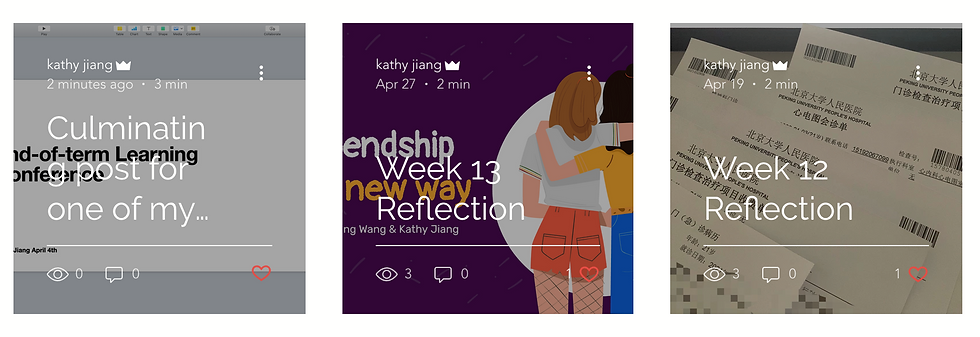Ambient Alarm Clock
- kathy jiang

- Dec 24, 2019
- 1 min read
Your assignment is to design and prototype an “ambient” alarm clock .
Each student is responsible for creating two storyboards and one rapid
prototype that communicates the intended design.
1. Brainstorm
To begin, generate at least ten different ideas for an interactive alarm
clock . Focus on capturing the following aspects of the design of the
clock:
▪ High-level concepts (e.g. “Teddybear clock”)
▪ Features (e.g. “Tickle-me snooze button”)
▪ Contexts of use (e.g. “Holiday clock”)
Be visual and sketch drawings of your various concepts. It’s easier to
tame down a wild idea than heat up a boring one, so go wild and think of
some crazy stuff. When coming up with wild ideas, also try to consider
how to keep your ideas “concrete.” Could they be implemented as actual
features, objects or services?
2. Storyboard
Create a storyboard communicating two different experiences that the
user might have with the clock (e.g. at different times of day, in differ-
ent contexts, or different users altogether). Be visual, and sketch draw-
ings of these different concepts in sequence over time. Each storyboard
should have at least three panels.
3. Rapid Prototype
Using your storyboards as inspiration, build a rapid prototype to realize
the intended design of your clock . Use whatever convenient materials
you like; the prototype doesn’t need to be fully functional or interactive,
but it wouldn’t hurt if it had some special features that were fun to in-
teract with (e.g. buttons you can push, flashing lights, sounds, different
PROJECT #5
Introduction to IxD
IXDSN-100-01
Spring 2019
states, fun materials that make you want to cuddle it, etc.).
Tip: for interactivity, leverage the resources of the HybridLab. Ard uinos
and technical support staff are available to help you realize your vision.





Comments